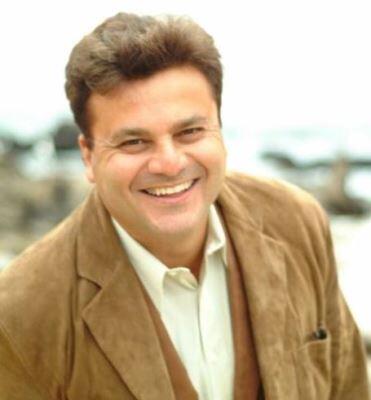Those who are successful in their incubation stage become magnets for people, bringing heightened levels of self-awareness, self-management, self-mastery, and attuned relationships. They provide guidance for friends and family, giving them a sense of clarity, enthusiasm, and direction that encourages flexibility, positive feelings, and leadership.
What is self-awareness?
Self-awareness is the ability to deeply understand one’s emotions, strengths, limitations, and values. With self-awareness, you feel more realistic about your goals and what you can achieve in life; you become more honest with yourself.
What is self-management?
Self-management involves controlling your own emotions and not letting them control you. Those with heightened awareness also recognize those who try to control and manipulate them: a manipulative partner, a controlling authority, an ambitious subordinate, a backstabbing coworker, or an insecure person. If these individuals were free from problems like pain, suffering, neurosis, psychosis, paranoia, fear, tension, and anxiety, they would not be manipulative. The practical approach is to help them overcome their problems so you can live in peace and happiness.
Fill their minds with loving friendliness and help them realize the true meaning of peace, so you can live in peace and happiness. The more they are neurotic, psychotic, afraid, tense, and anxious, the more trouble, pain, and suffering they bring to the world. Converting a vicious and wicked person into a holy and saintly individual is a miracle. Cultivate adequate wisdom and loving friendliness within yourself to convert evil minds to saintly ones.
Another Eastern technique to melt the left side
Joseph Goldstein, in his book The Experience of Insights, says: “Pain is a good object for meditation. When there’s strong pain in the body, the concentration becomes stronger. The mind stays on it easily, without wandering much. Whenever sensations in the body are predominant, make them objects of meditation. When they are no longer predominant, return to the breath. Awareness should be rhythmic, not jumping or clutching at objects, just watching ‘rising-falling,’ ‘pain,’ ‘itching,’ ‘heat,’ ‘cold,’ and ‘rising-falling.’ When you find yourself tensing because of pain, carefully examine the quality of unpleasantness and painfulness. Become mindful of that feeling, and the mind will naturally come to a state of balance.”
Achieving Creativity
Becoming creative is the ultimate goal of the incubation stage. Creativity requires imagination, curiosity, fantasies, and foresight. These are not possible if the consciousness is not operating on the right side, where it is free, fluent, flexible, original, and autonomous. According to Dr. Langer in her book Mindfulness, those who can free themselves of old mindsets, open themselves to new information, play with perspective and context, and focus on process rather than outcome are likely to be creative, whether they are scientists, artists, or cooks.
The Zen master Shunryu Suzuki, in his book Zen Mind, Beginner’s Mind, expresses creativity and self-expression in Zen practice: “To cook or to fix some food is not preparation, according to Dogen; it is practice. To cook is not just to prepare food for someone or for yourself; it is to express your sincerity. So when you cook, you should express yourself in your activity in the kitchen. You should allow yourself plenty of time; you should work on it with nothing in mind and without expecting anything. You should just cook!”
When your consciousness has completed its transfer from the left side of the illustration to the right side, you are now ready to explore your creative side.

A curious mind in a heightened state needs challenges, virtuous challenges, tension, and a desire for satisfaction. A perfectly conditioned consciousness creates these purified challenges through small internal conflicts, aiming to improve life (inventions) or create for aesthetic pleasure (arts) or passion (dance, photography, woodcarving, rock climbing, etc.). Once these challenges arise, we tackle them relentlessly to achieve unification. The results of these small conflicts are often hard work, timelessness, and foresight. I want to emphasize again the power of unification and the experience of flow, which is the ultimate goal.
A good question is: how does one stimulate more of these conflicts within the subconscious? Childlike observation and heightened attention can make a big difference. As individuals become more absorbed in tasks and passions they enjoy, they become USERS of that passion or job. Research has shown that USERS are the best innovators. Users develop skills, concentration, insights, purification, and bare attention, allowing them to see familiar objects (the subject of passion) in unfamiliar ways. In the next sections, I explain the concept of the user.
At least ten years of steady work in a discipline or craft seem required before mastering it. The capacity to take a creative turn requires such mastery, and significant breakthroughs rarely occur before a decade of sustained activity. Even Mozart, arguably the exception that proves the rule, had been composing for at least a decade before producing works regularly considered worthy of the repertory. For the seven creators in question, at least a decade—and often more—elapsed before innovative achievement coalesced. Typically, another decade passed before a second major innovation was forged.
Yet, it would be unwarranted to claim that one must follow the craft for ten years before striking out on one’s own. My analysis suggests the reverse pattern. Individuals who ultimately make creative breakthroughs tend to be explorers, innovators, and tinkerers from their earliest days. Never satisfied with merely following the pack, they are usually found experimenting in their chosen field and beyond. (Source: Creating Minds by Howard Gardner)
